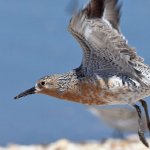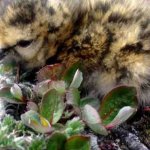How well do you know this crab that shares the Delaware Bay with us? Here’s a refresher as you prepare for your visit on the bay.
1. The horseshoe crab is not a crab.
Horseshoe crabs are arthropods, but are not in the crustacean class like crabs. Instead, they are in their own class called Merostomata and are actually more closely related to spiders and scorpions. No need to worry though; horseshoe crabs cannot bite or sting.
2. Horseshoe crabs are a sought after menu item for some species.
Juvenile and adult horseshoe crabs do have predators. This list includes gulls, loggerhead sea turtles, alligators, sharks, and even people. In fact, horseshoe crab is considered a delicacy in certain parts of Asia.
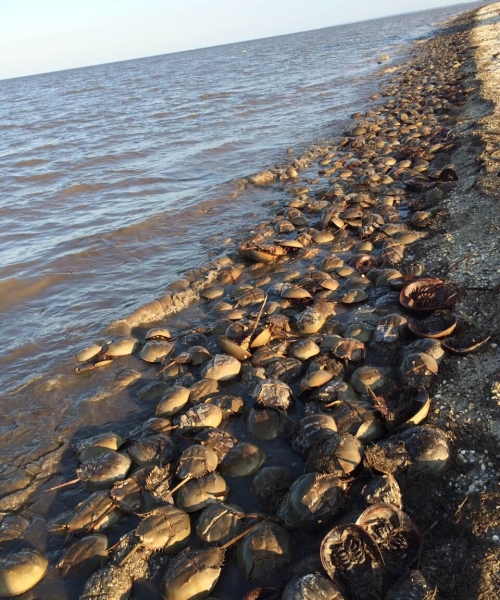
Peak spawning is a sight to see. Remember to visit on a high tide. Photo: Laura Chamberlin.
3. Reproduction is difficult and dangerous work.
Females will lay as many as 80,000 to 100,000 eggs during one breeding season. The female has to come up to shore, usually with more than one eager male attached, and then has to dig a 6 inch hole and deposit 4,000 to 5,000 eggs at once! She then drags the males over the hole so they can fertilize the tiny eggs. She will do this up to five times during one spawning event! The whole act is exhausting and sometimes the waves turn breeding crabs over. At times they aren’t able to turn over again and will perish this way. It’s estimated that 10% of breeding horseshoe crabs will die like this each season. Yikes!
4. Horseshoe crab life is hard!
Females lay tens of thousands of eggs in one season for a reason. Out of every 10,000 eggs, only six will hatch. Things don’t get any easier at this point – for every one hundred thousand larvae swimming along the mudflats, only three will survive their first year. The lucky ones can live as long as 20 years.
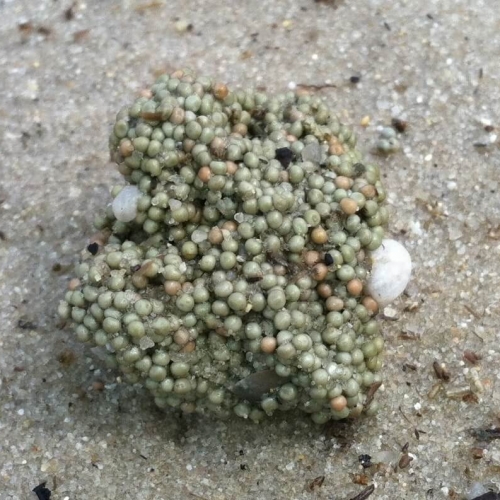
Sometimes the eggs can be found in clusters, a bonanza for widllife. Photo: Laura Chamberlin.
5. Horseshoe crabs have some buff bods!
Horseshoe crabs have over 750 individual muscles that make up their bodies; humans only have around 650. Do you think horseshoe crabs go around saying “I’m gonna pump, YOU UP” when they see us humans?
6. Female horseshoe crabs are full-bodied, stunning girls that outweigh the puny males.
Female horseshoe crabs are BIG – sometimes twice as large as the many suitors that will be swarming around her during spawning. Males differ in other ways too. Males have a modified first set of appendages that look like boxing gloves and they have a concave shape to their shells that allows them to rest on the female more easily during spawning.
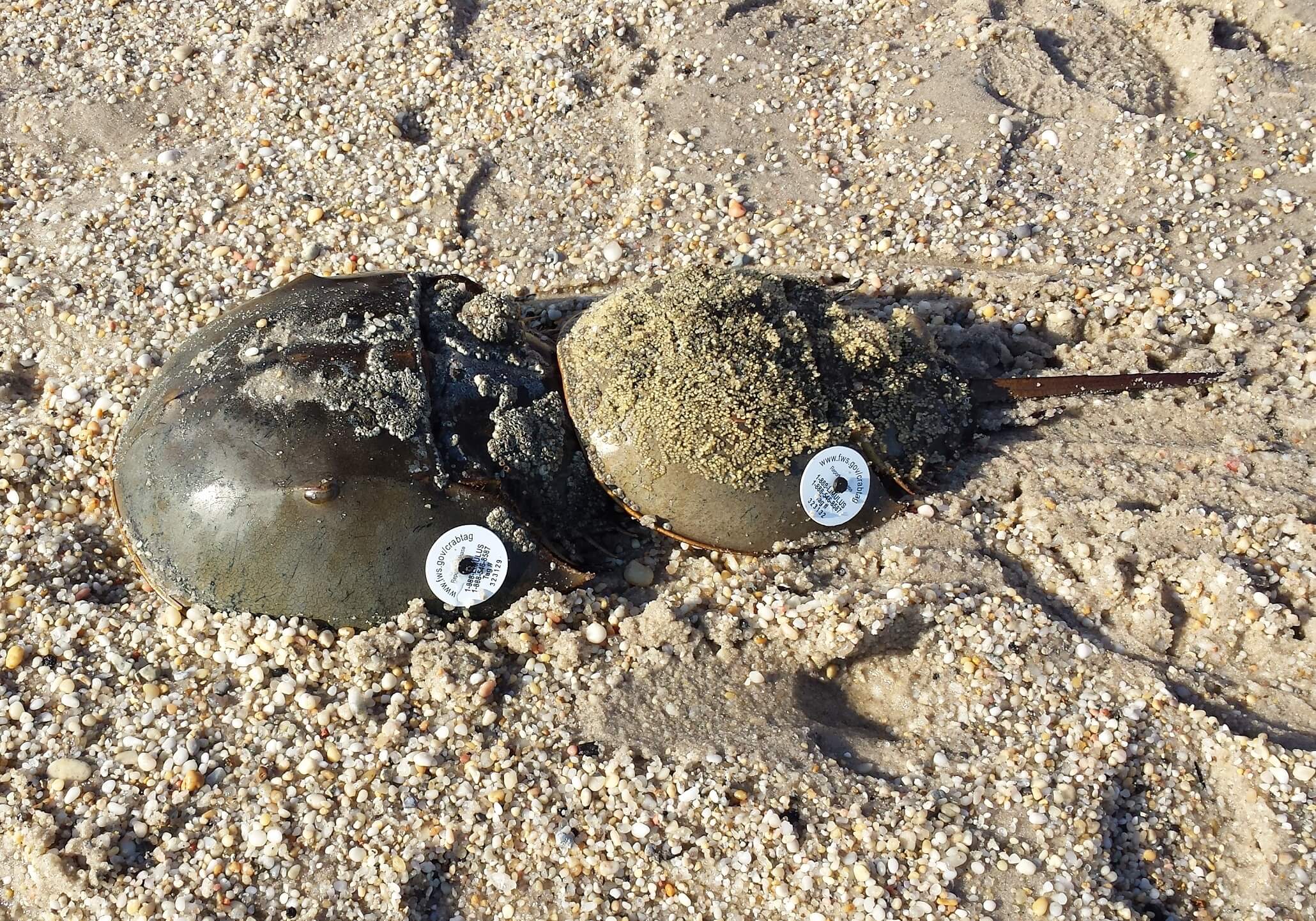
Tagged female with a tagged male attached. Photo: Laura Chamberlin.
7. And finally, these little guys are BIG heroes!
The horseshoe crab should be revered for its contribution to human health.
Not only has the horseshoe crab allowed medical researchers to gain a better understanding of human vision (which was so groundbreaking, it led to a Nobel Prize in the 1930’s), but they have directly impacted most everybody that is alive today. Horseshoe crab blood cells, called amoebocytes, have the ability to find and form clots around bacteria that would otherwise cause infection in the horseshoe crab. A solution called Limulus amoebocyte lysate (LAL) is produced from the blood cells of the horseshoe crab. LAL is very sensitive to bacteria and is used to test the sterility of all injectable drugs, vaccines, and implantable devices we use in human and animal medicine. There is no substitute for LAL to date and crabs must be bled to obtain this magnificent bacteria detector. Many of the horseshoe crabs survive 1/3 of their blood being drained, but 10-15% do not and will die as a result of the process.
In addition to all of this, we use chitin from their shells for surgical sutures and wound dressings for burn patients. We really do owe great thanks to the horseshoe crab!*
Want to learn more about these incredible creatures? Visit horseshoecrab.org or pick up a copy of Horseshoe Crab – Biography of a Survivor by Anthony D. Fredericks.
For an update on synthetic LAL see this recent post: Saving Horseshoe Crabs…one company at a time
Post by: Adriana Manchen, Delaware Bay Program Assistant
Cover Photo: Horseshoe crabs spawning at South Reeds Beach. Photo: Laura Chamberlin.





